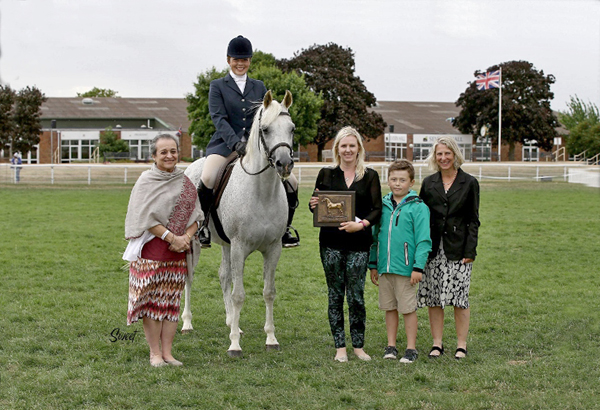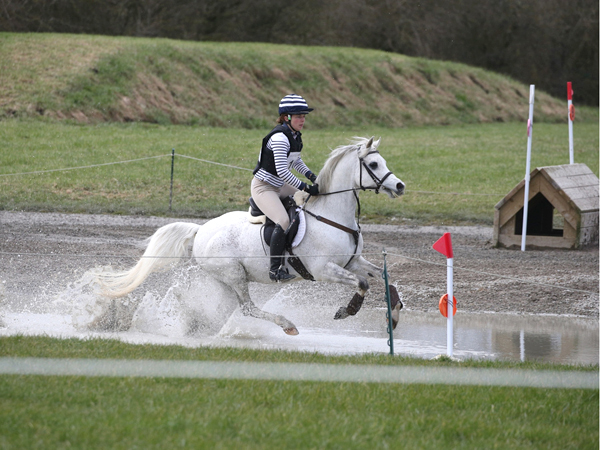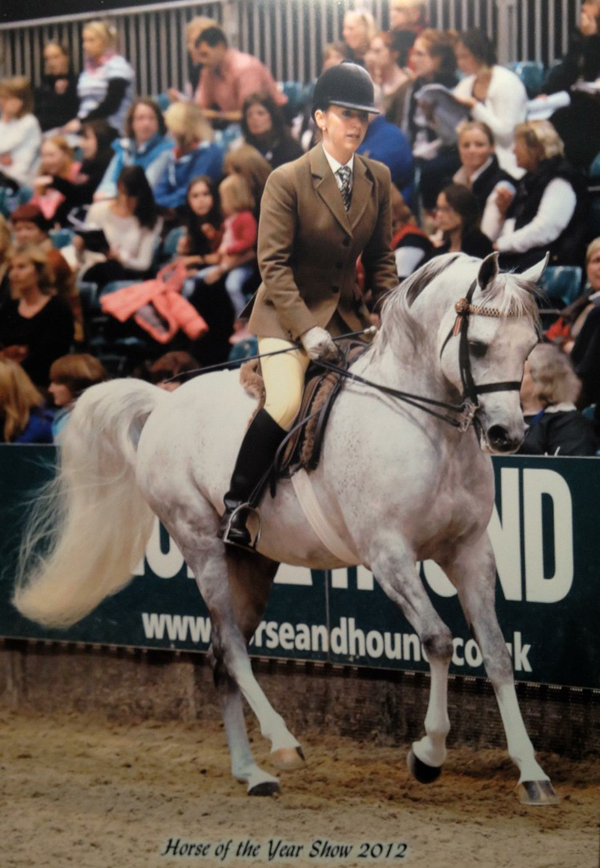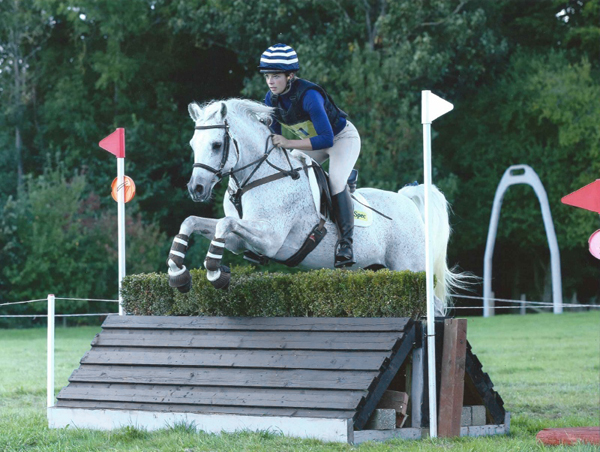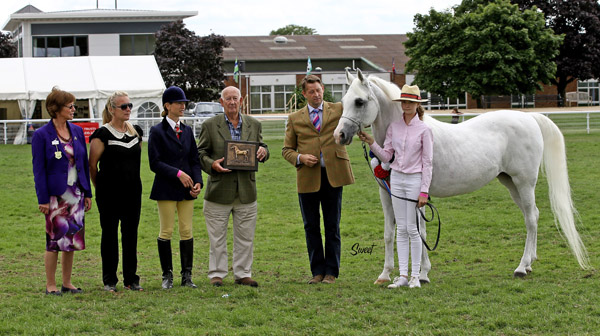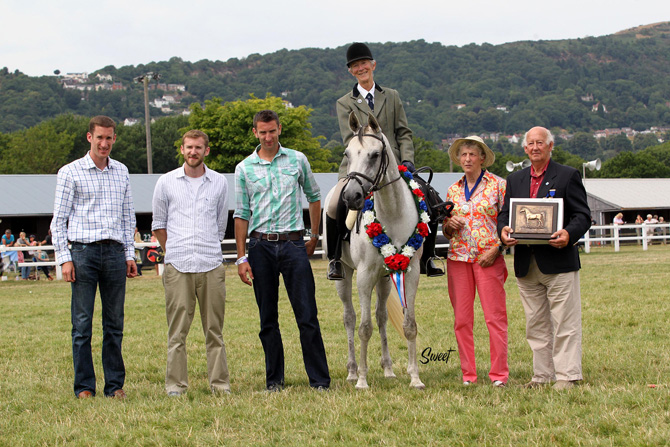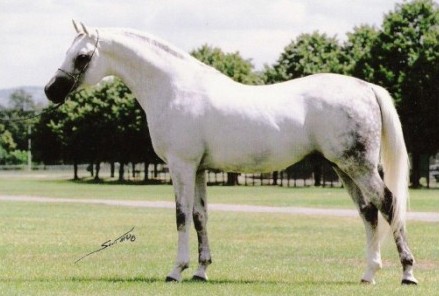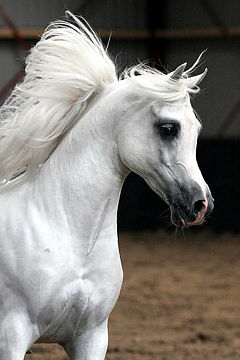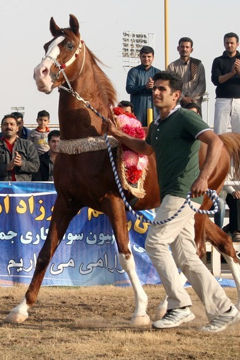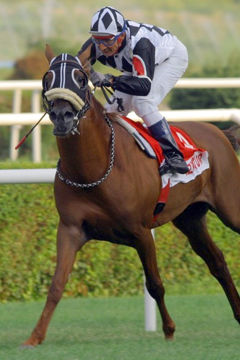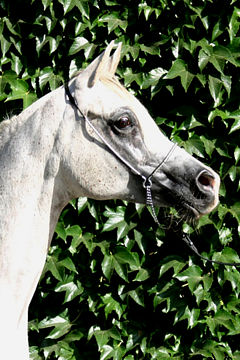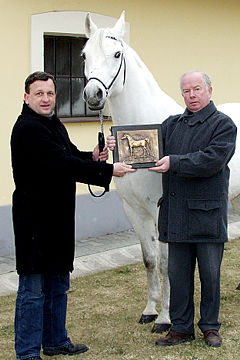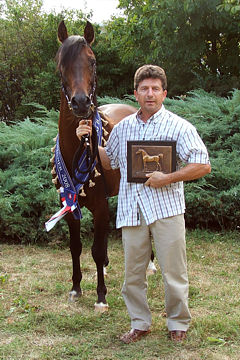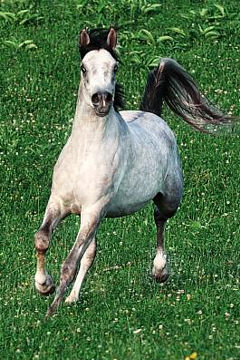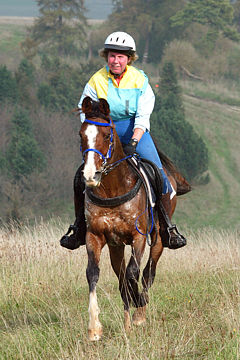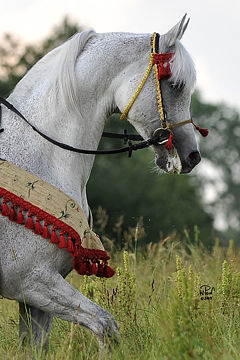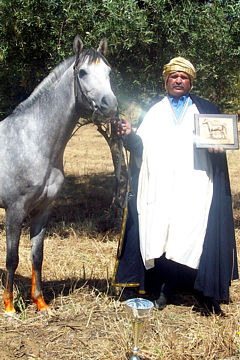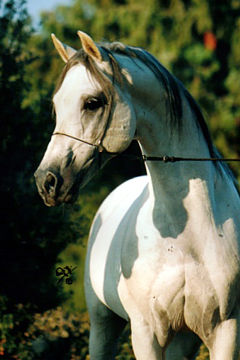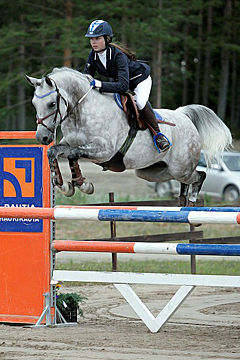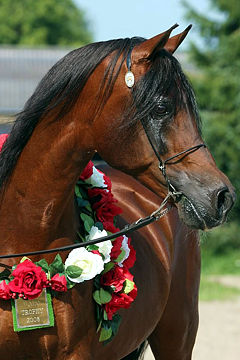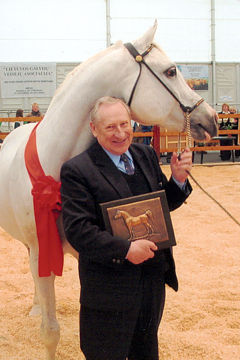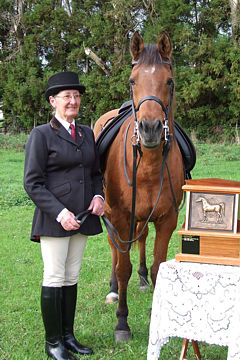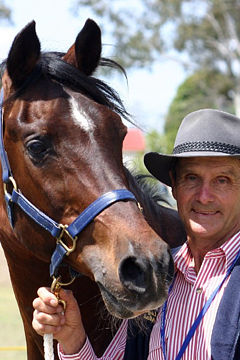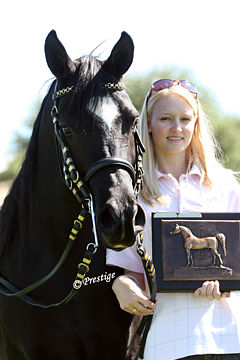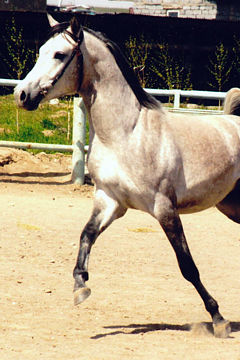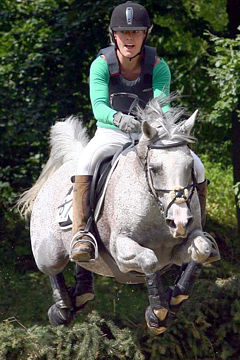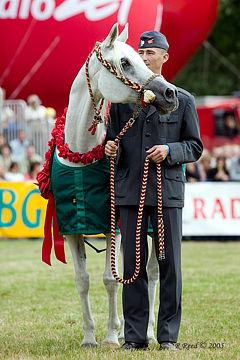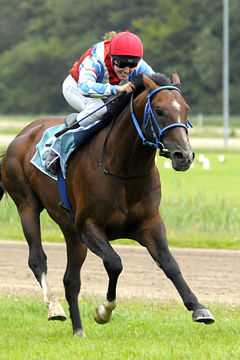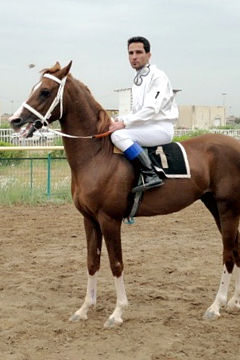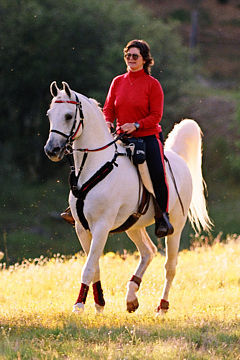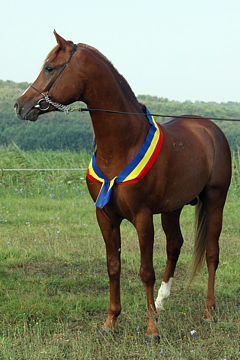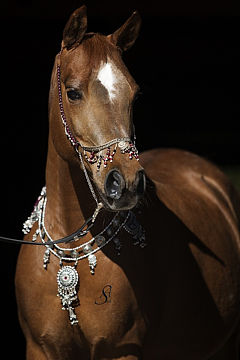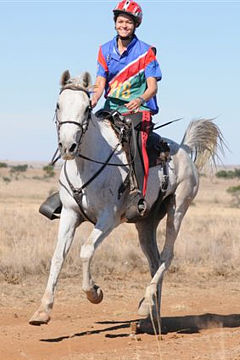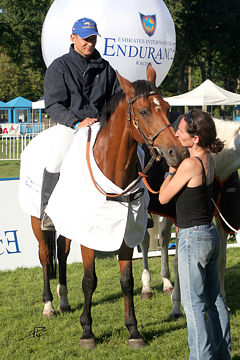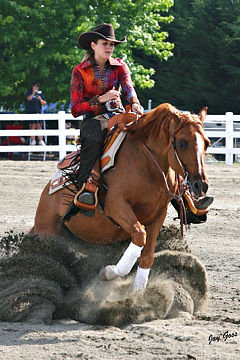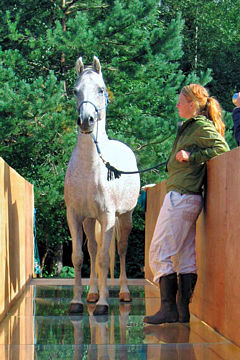![]()
Member Report from United Kingdom
REPORT MADE AT THE 2019 WAHO CONFERENCE:
Karin Swanson, UK: Mr. President, Members of the Executive Committee, fellow Delegates and WAHO Members. My name is Karin Swanson and I am the Registrar at the Arab Horse Society of Great Britain. My co-delegate is Mrs. Joanne Lowe, Chairman of the Arab Horse Society Council. We would like to thank the Arabian Horse Society of Australia for their marvellous hospitality here in Australia, and also Kina Murray for all the work that she does on our behalf.
Since the last Conference, we have registered 378 purebred Arabian foals in 2017 but that has fallen down to 309 in 2018, but then foal registrations seem to be staying around the 300 mark. Breeder numbers however, are declining as older breeders stop breeding and there don’t seem to be a great many younger ones to step into the gaps they leave. Plus, the economic climate in the UK at the moment is not very good and there is of course the added uncertainty caused by Brexit. Exports were down from 182 in 2017 to 160 in 2018. But imports have risen from 18 in 2017 to 19 in 2018. Last year saw the publication of our latest stud book, Volume 23 of the Arabian Horse Stud Book, which is available both in hard back and on CD. CDs have been sent to all the Registries and 100 hardback copies were printed.
Arabians continue to participate in many disciplines in the UK. Racing is organised by the independent Arabian Racing Organisation and in 2018 there were 9 full race meetings and 17 single Arabian races on a Thoroughbred card, with 31 jockeys and 26 trainers listed.
Endurance is organised by Endurance GB in England and Wales and they scheduled 11 FEI rides and 59 national rides for 2019 in England and Wales. Other disciplines such as show jumping, driving and eventing all take place under other societies, so it is not possible to say how many Arabians compete in these, the highest number will be in dressage as this is very popular in the UK. The major ridden discipline for Arabians in the UK is the ridden showing, and the Regional Groups offer a variety of ridden classes including qualifiers for the Horse of the Year Show, which is the ultimate goal for ridden horses. The Arab Horse Society runs a Championship Show which holds classes for both in hand and ridden horses who all compete to be crowned British National Champions. The Arab Horse Society also runs the British Arabian Championships for ridden and in hand classes, and the Amateur Arabian Show.
2018 was a significant year, as the Arab Horse Society celebrated its Centenary, having been founded in 1918 with Wilfrid Scawen Blunt standing as the first President of the Society and the first volume of the Arab Horse Stud Book being published in 1919. The Society began with just 125 members and 2 honorary members, one of which was T.E. Lawrence, commonly known as Lawrence of Arabia, and a handful of breeders of which Lady Anne and Wilfrid Scawen Blunt were perhaps the most well-known. 100 years later the Society has a membership of over 1200 and over 100 breeders of purebred Arabs are still carrying on what the Blunts started. However, the number of purebred foals registered has declined from over 1,000 in the 1960s and 70s to just 309 in 2018, again a sad indictment of the current economic climate in the UK.
A programme of events and publications were created to celebrate the Centenary of the Arab Horse Society, an exhibition entitled ‘From the Desert to the World’ was held at the National Heritage Centre for Horse Racing in Newmarket in March 2018, to illustrate the history, influence and achievements of Arabian horses in the UK and worldwide. Exhibits included paintings by our Honorary President Mr Peter Upton, the original headgear worn by the stallion Skowronek and the new Princess Muna Saddle of Honour. Also on show was a genetic map of the stallion Sambist, the first Arabian to have his genome sequenced. The beautifully illustrated centenary book of the Arab Horse Society compiled by Anne Brown was also launched at the exhibition, and has proved to be a great success. The Peter O’Sullevan Arena at Newmarket was the venue for an Arabian Performance horse parade in April 2018, featuring 23 horses representing racing, eventing, endurance, jumping, western riding and dressage and also including Horse of the Year Show champions and AHS Performance horse awards winners. Centenary merchandise was produced for sale online and at the National Championship Show and of course volume 23 of the Arabian Horse Stud Book was also on display and for sale. There were special Centenary rosettes for all horses exhibited in the show and a Centenary party was held there for all the exhibitors and members attending the show.
In October the AHS Marathon was revived and run in glorious weather over Newmarket Heath by the kind invitation of the Jockey Club. This was a great success and there were no injuries, thankfully. The AHS Premium Performance Scheme produced a booklet to commemorate past and present Premium stallions. The Arab Horse Society also runs a Premium Performance Show Scheme for stallions and mares. The 2017 WAHO trophy was won by Eastworth Ahmoshini, a homebred mare rewarded for her successful showing career under saddle and for her duties as a broodmare. The 2018 winner was the versatile stallion Mukhtar Ibn Eternity, a multi champion when showing both in hand and under saddle and now a successful performance horse competing in dressage, eventing, show jumping and endurance as well as carrying out his stud duties. Thank you very much.
REPORT AT 2017 WAHO CONFERENCE:
Karin Swanson, United Kingdom: Good afternoon Mr. President, Members of the Executive Committee, Delegates and WAHO Members. The United Kingdom would like to thank His Majesty King Hamad and His Highness Sheikh Isa Bin Salman Al Khalifa for their wonderful hospitality in the Kingdom of Bahrain. My name is Karin Swanson and I am the Assistant Registrar at the Arab Horse Society, representing the United Kingdom. Here is the United Kingdom report.
The Arab Horse Society registers the horses of Great Britain, the Republic of Ireland, Greece and Malta. Registrations for purebred foals have continued to decline over the last years. Since the last Conference, we registered 414 foals in 2014, down from 482 in 2013; 387 foals in 2015 and 378 foals in 2016. Breeder numbers continue to decline as the cost of land and administration fees increase. The horse world is changing in the UK and the Arabian horse world is just part of this large change, where people just want a horse to ride and fewer are really interested in breeding, as land is too expensive.
Imports and exports have dropped since the last Conference. In 2015 there were 211 exports and 95 imports. In 2016 there were 142 exports and 81 imports. The UK follows the European and WAHO rules for imports and exports. The last stud book published was the Arab Horse Society Stud Book volume 22, printed in 2014 and covering the years 2010 to 2013 and this is available on CD which has been sent to all the registries. 100 hard back copies have also been printed. Volume 23 which covers the years 2014 to 2017 is due for publication in 2018, which will be the Centenary year for the Arab Horse Society.
Arabians participate in many disciplines in the UK. Racing is organised by the independent Arabian Racing Organisation (ARO). There were 55 trainers of which 22 were international and 64 jockeys listed in 2016. There were 9 full race meetings and also 14 single races on a Thoroughbred card last season, with a similar number of races for 2017. The photograph shows the British Bred race horse of the year for 2016, Callymay.
Endurance is organised by Endurance GB (EGB) in England and Wales. EGB have scheduled 10 FEI rides and over 100 rides for 2017 in England and Wales. There are over 1200 horses registered with EGB. Scotland which has their own organisation, SERC, hold one major ride and around 50 rides per season.
Other disciplines such as dressage, show-jumping, driving and eventing all take place under other societies so it is impossible to say how many Arabians are competing in these. The highest number will be in dressage as this is a very popular sport in the UK, with dressage clinics most weekends all over the country and during the week as well. For 2017, a new dressage initiative has been launched by the AHS in conjunction with British Dressage aimed specifically for Arabians. Ridden showing is the main ridden discipline for Arabs in the UK with Regional Group shows holding a variety of ridden classes including qualifiers for the Horse of the Year Show. This remains the ultimate goal for a ridden horse. The Society has introduced a new medal competition to encourage people to enter qualifying classes for the Horse of the Year Show. The Arab Horse Society National C Show holds halter and many different ridden classes but the title to win is still British National Champion. The Arab Horse Society also runs the British Arabian Championships for Ridden and In Hand classes and the Amateur Arabian Show continues in popularity.
The winner of the WAHO trophy for 2015 was Silvern Prince, rewarded for his ridden show record and as a sire. The 2016 winner was Jammilah who was also rewarded for her ridden show record and as a broodmare. Both these winners were Ridden Arabian of the Year in 2010 and 2003 respectively. The winner of this award gets a mention in the weekly national horse magazine, Horse and Hound.
The Arab Horse Society produces a bi-annual glossy magazine to help promote the breed and for the Arabian Enthusiast, which is always well received by our Members. There is also the Arabian Magazine produced in the UK and available worldwide which helps with promotion. However, these days the internet is the main PR medium, particularly Facebook where members can post all their news and photos for free. The Arab Horse Society also operates a Premium Performance Scheme for stallions and mares. The National Stallion Association of the UK (NaSTa) organises a tough performance test for all breeds annually and awards gradings to stallions and mares. Stallions can also attain Premium status through exceptional achievements of their progeny, as can mares. Mares can also be evaluated at grading days organised by their societies.
The Society has a welfare officer who is very well versed in all aspects of welfare and works closely with the various welfare societies in the UK. Information is available from the Arab Horse Society website and printed in publications. Seminars for breeding and other horse related matters are run by the general horse population. The current policy on genetic testing is to inform and educate and thus to encourage our members to test their breeding horses with articles and publicity. The status of stallions on the Premium Scheme are made public if the owner agrees and many owners now of their own accord advertise their stallion’s status. The Society do not hold any records on the genetic status of breeding stock at the current time.
The Arab Horse Society celebrates its Centenary in 2018 and various events and publications will be published for this special year, including a book. More details on these events will be available shortly. This concludes the UK report. Thank you very much.
REPORT AT 2014 WAHO CONFERENCE:
Caroline Sussex, United Kingdom: Mr. President, Members of the Executive Committee, Delegates and WAHO Members, the United Kingdom would like to thank His Highness Sheikh Abdullah Bin Khalifa Al Thani, Special Advisor to His Highness Sheikh Tamim bin Hamad Bin Khalifa Al Thani, Emir of Qatar and the Qatar Racing and Equestrian Club for their hospitality once again. My name is Caroline Sussex, and I represent the United Kingdom with my co-Delegate, Mrs Anne Brown.
Here is the UK Report. Registrations for Pure Bred Arabians have declined over the last year. Since the last Conference, we registered 519 in 2011, 554 in 2012 but only 482 in 2013. Breeder numbers continue to decline as the cost of land and administration fees increase. The horse world is changing in the UK and the Arabian horse world is just part of this large change where people just want a horse to ride and fewer are really interested in breeding.
Imports have remained stable. Exports have increased from 199 at the 2011 Conference to 273 in 2013. The UK follows the European and WAHO rules for imports and exports. The latest stud book, AHSB Volume 22, was printed this year and is available on CD which has been sent to all the Registries. 100 hard back copies have been printed as well.
Arabians participate in many disciplines in the UK. Racing is organised by the independent Arabian Racing Organisation, ARO. There are 44 trainers and 43 jockeys listed. There are 12 full race meetings and 9 single races on thoroughbred cards in the season. Endurance is organised by Endurance GB (EGB) in England and Wales. EGB held 5 FEI rides in 2014 and overall a total of 100 ride days all over England but not including Scotland which has their own organisation called SERC. There are over 1,200 horses registered with EGB.
Other disciplines such as dressage, show-jumping, driving and eventing all take place under other societies so it is impossible to say how many Arabians are competing in these. The highest number will be in dressage as this is a very popular sport in the UK, with dressage clinics most weekends all over the country and during the week as well.
Ridden showing is the main ridden discipline for Arabians in the UK with Regional Group shows holding a variety of ridden classes including qualifiers for the Horse of the Year Show. This remains the ultimate goal for a ridden horse. The Arab Horse Society National Show holds halter classes and many different ridden classes, but the title competitors aim to win is still British National Champion in both sections. The Arab Horse Society also runs the British Arabian Championships for Ridden and In hand classes. There is also a new Amateur Show which is becoming popular with our members.
The WAHO Trophy is presented at our National Show each year. The winner of the WAHO trophy for 2012 was the stallion Al Reeh Janoob, a very successful racehorse and endurance horse. In 2013 the Open National Stallion Association Performance tested mare, Kamillah who has competed in eventing and endurance with good success, was awarded the Trophy. In 2014 the winner is AV Kubla Khan, successful at eventing and a very good all rounder. I am not sure if this award has brought new people to the breed but it is a very important award for an Arabian horse owner to win and highly prestigious.
The Arab Horse Society produces a bi-annual high quality magazine to help promote the breed and for the Arabian Enthusiast which is always well received by our members. There is also the Arabian Magazine and the Crabbet Journal produced in the UK and available worldwide which help with promotion. However, these days the internet is the main public relations medium, particularly Facebook where members can post all their news and photos for free.
The Arab Horse Society also operates a Premium Performance Scheme for Stallions and Mares. The National Stallion Association of the UK organises a tough Performance Test for all breeds annually and awards gradings to stallions and mares. Stallions can also attain Premium status through exceptional achievements of their progeny, as can mares. Mares can also be evaluated at grading days organised by other societies. The Society also runs an annual Performance Horse awards scheme.
The Society has a welfare officer who is very well versed in all aspects of welfare and works closely with the various welfare societies in the UK. Information is available from the Arab Horse Society website and is also printed in publications. Seminars for breeding and other horse related matters are run by the general horse population and experience has found that it is better for the AHS members to attend these special events rather than run their own.
The current policy on genetic testing is to inform and educate and thus to encourage our members to test their breeding horses with articles and publicity. The status of stallions on the Premium Scheme are made public if the owner agrees and many owners now of their own accord advertise their stallion’s status. The Society do not hold any records on the genetic status of breeding stock. That concludes the report for the United Kingdom.
REPORT AT 2011 WAHO CONFERENCE:
Caroline Sussex, United Kingdom: Mr. Chairman, members of WAHO. We are grateful to the Qatar Racing and Equestrian Club for the organization of this Conference in the exciting city of Doha. We look forward to the programme of events and wish for a successful Conference. My name is Caroline Sussex, member of the UK Stud Book Committee and my co-delegate is Tracy Phizacklea, our Assistant Registrar.
Registrations for purebred Arabians have declined over the last 3 years from 768 in 2008, to 652 in 2009, and 546 in 2010. This is probably due partly to the recession, the ever increasing costs of registration which are caused by EU and Government requirements, and the cost of buying land in the UK. The latest studbook is volume 21 and was produced in 2010 in hardback and CD format. Volume 22 will be available in 2014.
Arabians participate in many disciplines in the UK. Racing is organized by the Arabian Racing Organization (ARO). Endurance is organized by Endurance GB (EGB). Other disciplines such as dressage, show-jumping, driving and eventing all come under different societies. Just over 200 horses are racing, around 1,000 are competing in endurance, but in other disciplines it is impossible to estimate the number although there are many Arabians out in open competition, or just used as general riding horses. There are around 80 shows affiliated to the Arab Horse Society. The most exciting innovation in recent years for ridden showing has been including 15 qualifying classes at shows around the country for the Horse of the Year Show, which is held in October. This 6-day major Show includes international show-jumping, ridden showing classes for all breeds in the UK, dressage, mini-eventing, Pony Club Mounted Games finals, scurry driving and special demonstrations. The 15 qualified Arabian horses in each section then compete in classes for the separate Ridden Gelding, Ridden Stallion and Ridden Mare of the Year titles. The first 2 in each class then go into the international arena for the Championships, to compete for the overall title of Ridden Arabian of the Year. The British National Ridden Championship at our National Show is the other top ridden title much sought after, ridden classes have also increased the demand for mature Arabians. The Arab Horse Society also runs the British Arabian Championships for youngstock and geldings, in-hand and ridden. Horses also have to qualify for this, under different rules.
The winner of the WAHO Trophy for 2010 was Ibn Ajwad who competes in open competition in various disciplines, and our 2011 winner is Vlacq Gilfea, an endurance champion. The Arab Horse Society produces a bi-annual glossy magazine to help promote the breed. The Horse of the Year Show classes, however, are the best shop window we have in the UK as the general public are there to see the Arabians performing under saddle.
To promote the cross-breeding of Arabian blood in the UK, the Arab Horse Society operates a Premium Performance Scheme for stallions and mares. The National Stallion Association organizes a tough performance test for all breeds annually, and awards gradings to stallions and mares. Stallions can also attain Premium status through exceptional achievements of their offspring, as can mares. Mares can also be evaluated at grading days with other Societies, but with Arab Horse Society judges. The Arab Horse Society organizes a horse marathon, a race over 26 miles, which brings together members of EGB, ARO and the Society, this is a unique event which I have been involved in since 1995. Since its inception in 1974, only twice has a non-Arabian or its derivative won. A midway vetgate checks that horses have a pulse rate of 64 bpm or less and for lameness, failure is elimination. Horses must finish uncompromised before being awarded their prizes and strict veterinary procedures are in place to ensure the welfare of the horses. This year’s event took place on Sunday.
The Society has a Welfare Officer who is very well versed in all aspects of welfare and works closely with the various national welfare societies in the UK. Information on welfare is available from the Arab Horse Society website and printed in publications. Seminars for breeding and other horse-related matters are run by the general horse population and experience has found it is better for AHS members to attend these special events, rather than run our own, although we do run a few seminars. Independent articles provided by the Arab Horse Society are published throughout the year, mainly in monthly magazines and in the country’s biggest equine magazine, Horse and Hound, which is printed weekly. For the Arabian enthusiast there is also the Arab Horse Society News, the Arabian Magazine and the Crabbet Journal, all produced in the UK and available worldwide. That concludes my report. Thank you.
REPORT MADE AT 2009 WAHO CONFERENCE:
Representing The Arab Horse Society of the United Kingdom, I am Christina Roebuck, Chairman of the Stud Book & Registration Committee, and my co-delegate is Miss Margaret Evans, Stud Book Consultant.
We produced Volume 20 of our stud book in 2007. It is difficult to estimate exactly the number of living purebred Arabians in the United Kingdom, but we believe there are about 20,000. In 2008 we completed the registration of 453 purebred Arabian foals. This number has been declining for several years and is expected to continue to decline due to the world financial crisis.
Artificial Insemination and Embryo Transfer are permitted in the UK, and microchipping for all foals will begin in 2009. In 2008 we imported 74 horses from within the European Union and 51 from the rest of the world. Also in 2008, we exported 136 to EU countries, and 91 to other countries.
The Arabian horse in the UK is shown in hand and under saddle, and its popularity as a horse for leisure riding is increasing. Endurance riding is very popular, and Le Trec is also attracting Arabian enthusiasts. We have had Arabian racing in the UK since 1980 and its popularity continues under the Arab Racing Organization. The Arab Horse Society itself organizes a National Show, with around 1,000 horses entered, and encourages Arabian classes at many other shows. We organize a 26-mile Marathon race to test our horses for speed and endurance.
REPORT MADE AT 2007 WAHO CONFERENCE:
We have recently published Volume 20 of the Arab Horse Society Stud Book which covers the years 2002-2006. Our next publication will be due in 2010 and will be available in 2011. The database from which it is produced is computerized.
In 2006 we registered 569 purebred Arabian foals. There were 700 broodmares and 250 stallions used for breeding. We have approximately 25,000 living registered Arabians. We parentage verify all our foals at registration by means of DNA however where the DNA of the parents is not available we use blood-typing to identify and then extract the DNA for use in verifying the next generation. We are not yet using micro-chipping. In 2006 we exported 120 horses to 16 countries, and we imported 114 horses from 17 countries.
We allow the use of Artificial Insemination, semen may be used after the death of a stallion as well as in his lifetime. Semen importation is allowed, as is its exportation. We also allow Embryo transfer but only allow 1 foal to be registered by this method in any 12 month period. We issue registration certificates and passports, which show the UELN number of the animal.
We hold a National Championship Show, there are 11 other regional group shows and very many classes, both ridden and in-hand, at shows run by agricultural societies. In fact showing is probably the most popular use of the Arabian, followed by pleasure riding and endurance riding, in the latter there are 700 separate rides each year. Arabians are also used for racing which is run by the Arabian Racing Organization.
In 2007, the AHS reported 579 foals registered, with 151 exports and 80 imports in the same year.

